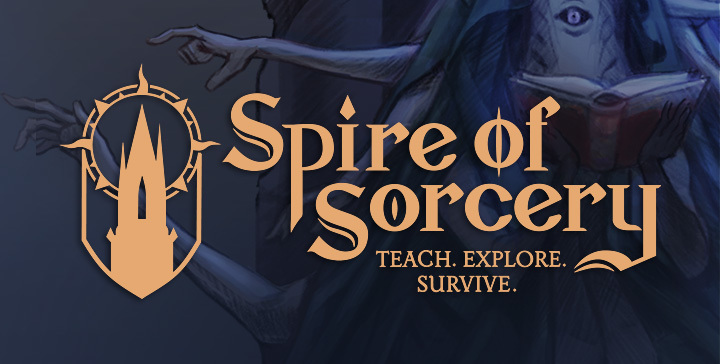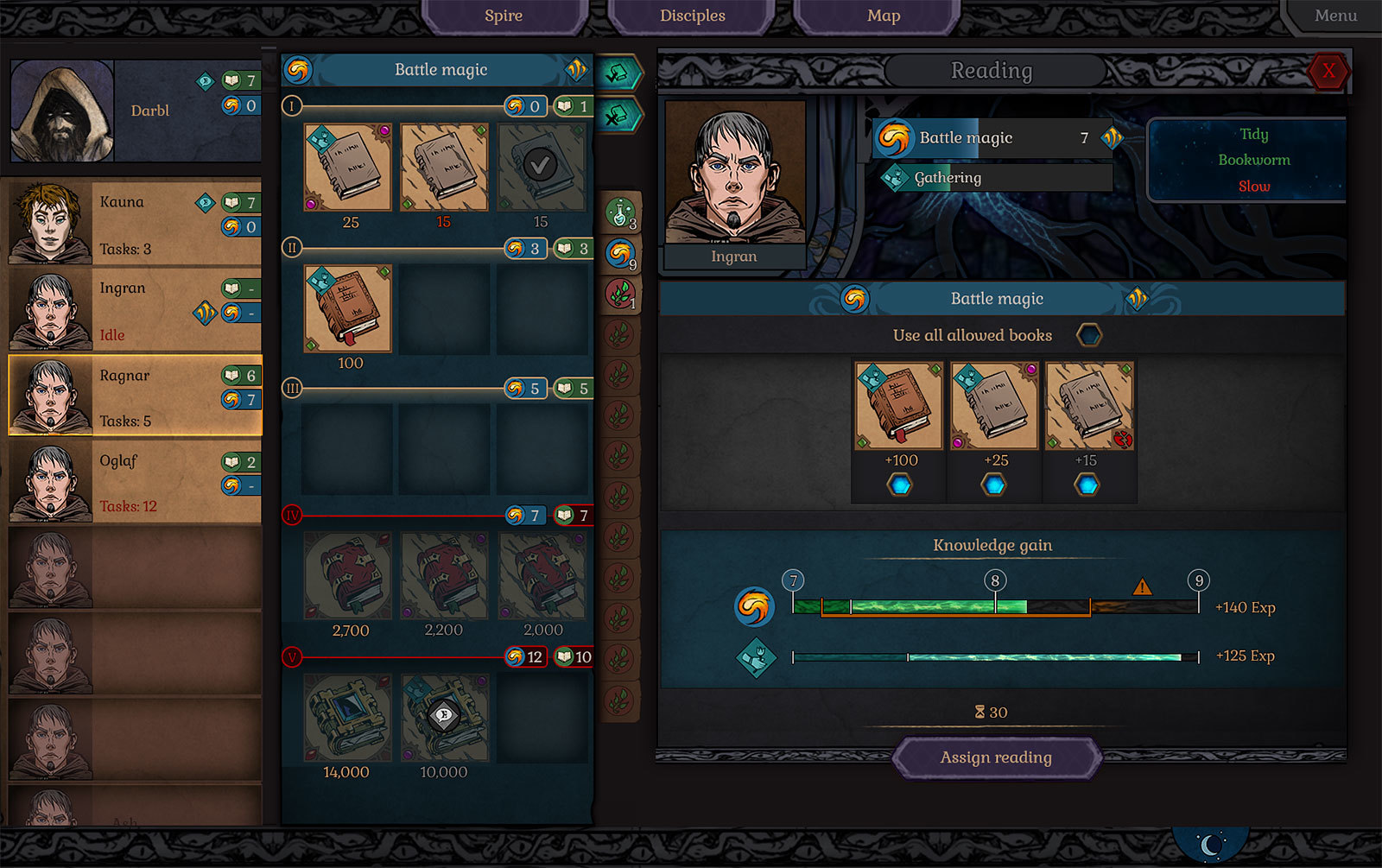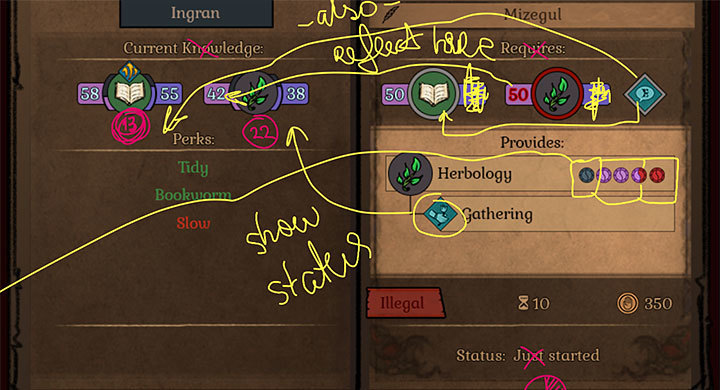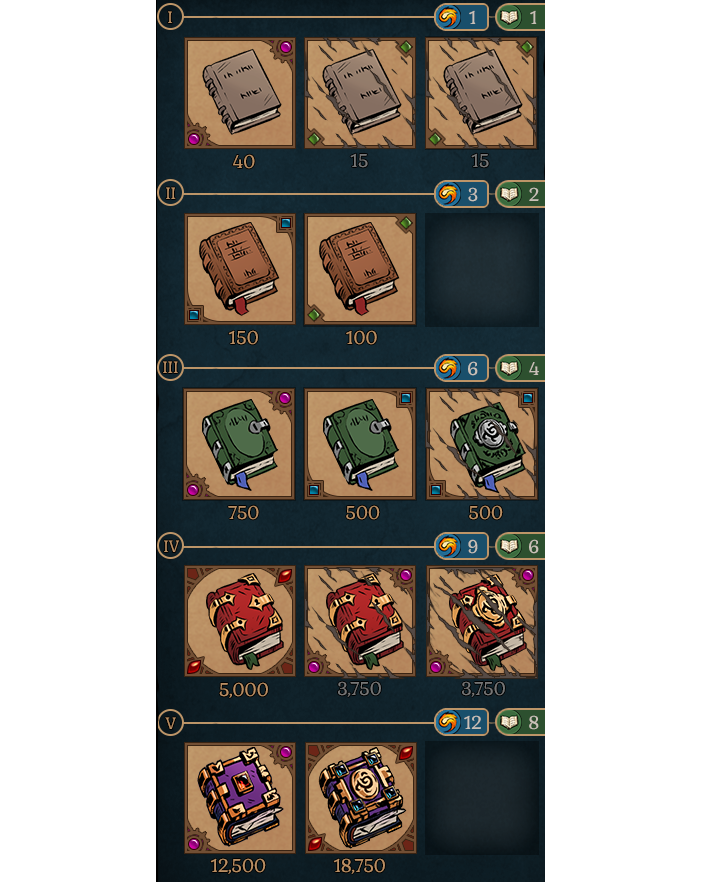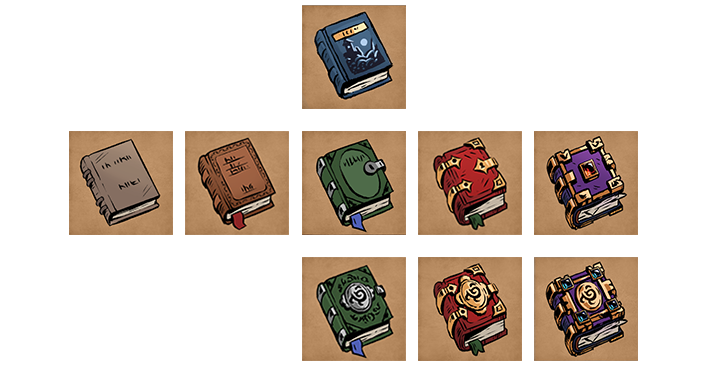#42 – GLOBAL MAP
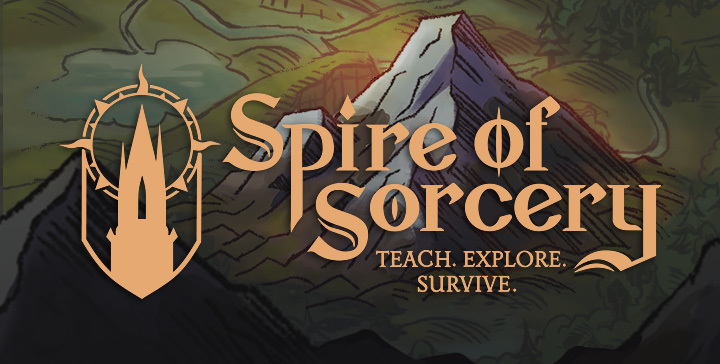
Welcome back to the development blog of Spire of Sorcery. To those of you who celebrated the Lunar New Year this week – happy holidays! And to everyone else – just a happy Friday!
A few days ago, I received something that will power me for the next two months: a box from Kagoshima full of sencha, gyokuro and matcha! Some of you may never have pondered on the difference between Yutaka Midori and Sae Midori or, with beating heart, preordered shincha from Uji – but I can’t think of a morning without a cup of this green elixir.
Today, I’d like to talk about something that drove our team to considerable stress, took weeks (actually, months!) of work as we went from one draft to another, and ultimately became the hardest visual issue that we ever solved during the production of Spire of Sorcery: the global map of Rund.

A NEW CAMPAIGN, A NEW MAP
Each time you start a new campaign, the world is generated anew, offering a new map. As we covered earlier, some things remain roughly the same - the mountains in the north and the ocean in the south, for example, - but as far as the Spire’s immediate environment is concerned, it’s a whole new thing.
Because the map is procedurally generated, we could not use any hand-drawn solutions where we would just paint a beautiful, detailed map of the world once - and then use it in every campaign for all eternity.
We also could not create and edit, say, 100 optimized maps (a large enough number to keep the game replayable for weeks!) because of the modding functionality: at some point, each of you would be able to modify the parameters of the world being generated, which can result in thousands of combinations.
Hence, we knew that have to develop a system rather than a specific solution and test it with multiple combinations.
One of the first concepts of the map. This image was not generated but was created with precision for a specific campaign.
TELLING A STORY
One of the strongest references that our game designer insisted on for Spire of Sorcery is that it should remind us of reading dark fantasy books that offer exploration, adventures and mystery themes. Because of this, there’s a lot of “bookish” visual design in the game, and that includes the style of the global map.
We’re not building an RTS or an RPG with the direct control, and so the world should remain distanced from our mage; being more of a “concept” of the world rather than a simulated photorealistic depiction. Up in the Spire, next to scrolls with alchemic formulas and a collection of rare minerals, there lies a map of Rund on which the mage makes notes every time a party arrives with new discoveries.
“Here lie the impassable swamps”, – you’ll murmur to yourself, – “and here begins the thousand-years old ancient forest... what secrets does it hide?”
Some of the first concepts were quite minimal in their colors, indeed looking more like a book than like a game.
REFLECTING BIOMES
Throughout Rund, there’s currently over 10 of different biomes – from hills to watersides and to Black Pools – and we expect to add more with the content updates during the Early Access period of the game.
One of the first things we tried with the global map was to show very clearly, what sort of biome was in every point of the map. At that time, we did not yet develop the concept of “areas” for harvesting mushrooms or mining ore, and so we assumed that players really needed to know the exact biome type because clicking on “forest” meant one of resources and clicking on “plains” meant another.
Unfortunately, the more we tried to match the actual biome backgrounds on the map, the more confusing the map became. Functional - yes. Beautiful - no.
One of the drafts of the map. Easy to use, but unappealing to look at.
OBJECTS, DWELLINGS, RESOURCES
In addition to knowing that there’s a hillside to the west and a lake to the east, you also need to know if you can harvest clay in those hills and if that lake is the home to mermaids.
While we kept looking for the visual style of the game, we also started to experiment with the different ways of showing information over the landscape. From bright floating icons to objects that were fully integrated into their surroundings, we tried it all.
Here, we tried for the first time to show the Spire as a real object on the map, rather than as an icon. We liked the idea!
As to resources, in the end we agreed that it makes the most sense to show actual emeralds – same as you’d see in your warehouse – where we have a source of emeralds on the map, and fruits where we have a source of fruits, rather than some symbolic icon that would then have to be deciphered.
Different ways of showing resources on the map.
IT ALL COMES TOGETHER
I don’t think there’s a single person in our team who at some point did not try to make their own version of the map – and failed at that :-).
Finally, after more than a year of drafts and revisions, the stars aligned.
This image represents our current best effort.
To be honest, we did not know how important the look of the map was to the whole look and feel of the game – until we found the current solution, when we sat back and proclaimed “yes! this indeed is the world of Rund!”. The bad news: it took us months of searching to arrive here. The good news: IT IS FINALLY DONE. YES, YES, YES!
–––
That’s it for today! As always, for updates on work in progress, please check the game’s official Discord server.
–––

ːsummer_magicː Spire of Sorcery – Character Generator (Steam)
ːsummer_magicː Official Discord server
ːsummer_magicː Twitter (game updates)
ːsummer_magicː Facebook (game updates)

ːmaliceː Official Discord server
ːmaliceː Twitter (game updates)
ːmaliceː Facebook (game updates)
ːmusicː Original Soundtrack on Spotify

ːnotebookː Twitter (studio news)
ːnotebookː Facebook (studio news)
ːnotebookː "Behind the scenes" Instagram
ːnotebookː YouTube
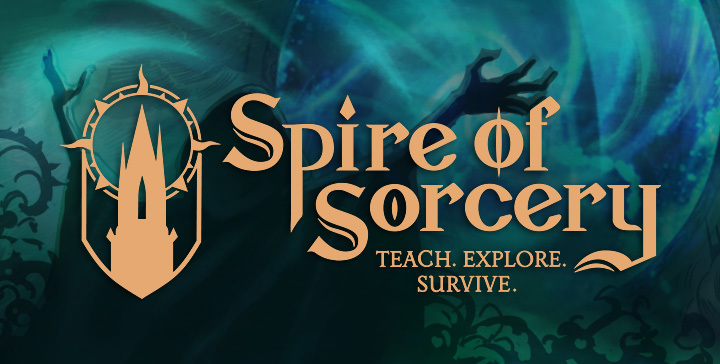

 The symbol that we use for Magic Energy in the current version of the game.
The symbol that we use for Magic Energy in the current version of the game. 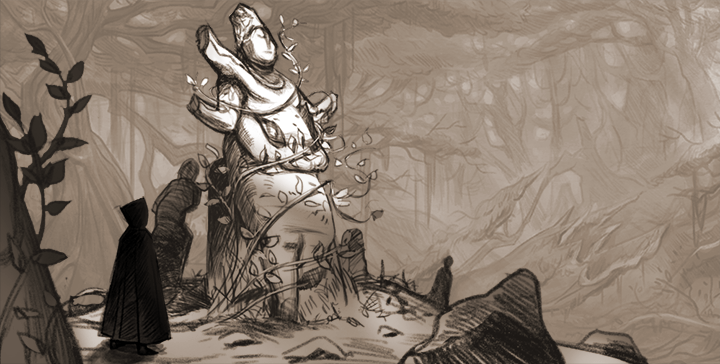 An Idol.
An Idol. 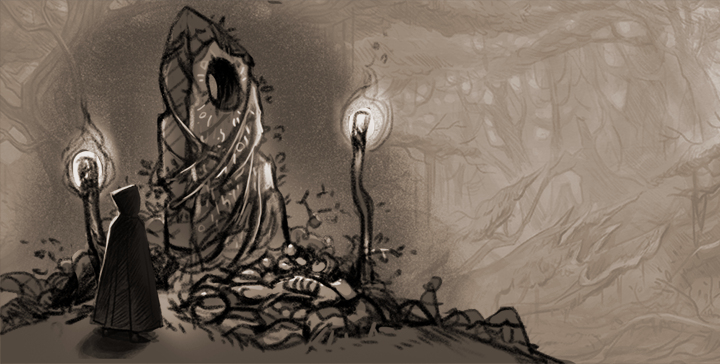 A Monolith.
A Monolith. 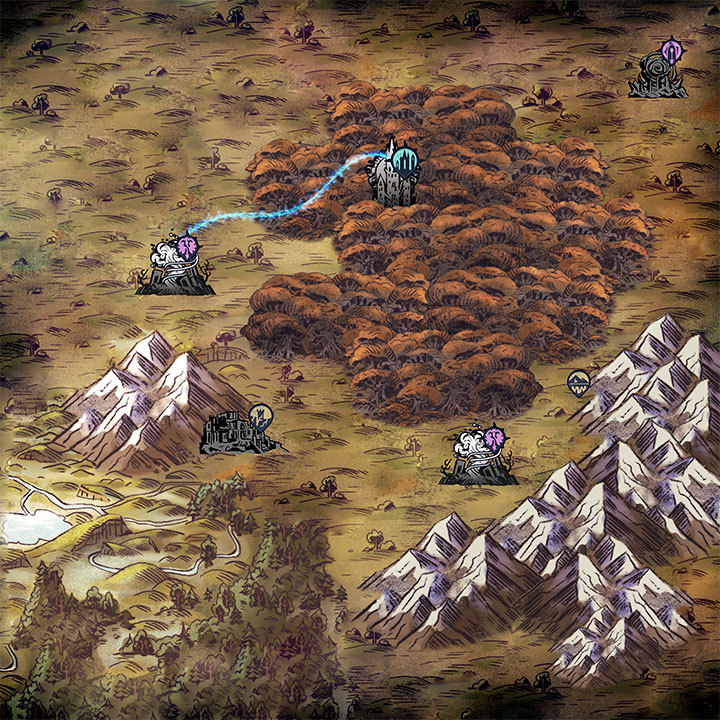 One of the concepts for the Global Map that we currently update.
One of the concepts for the Global Map that we currently update. 



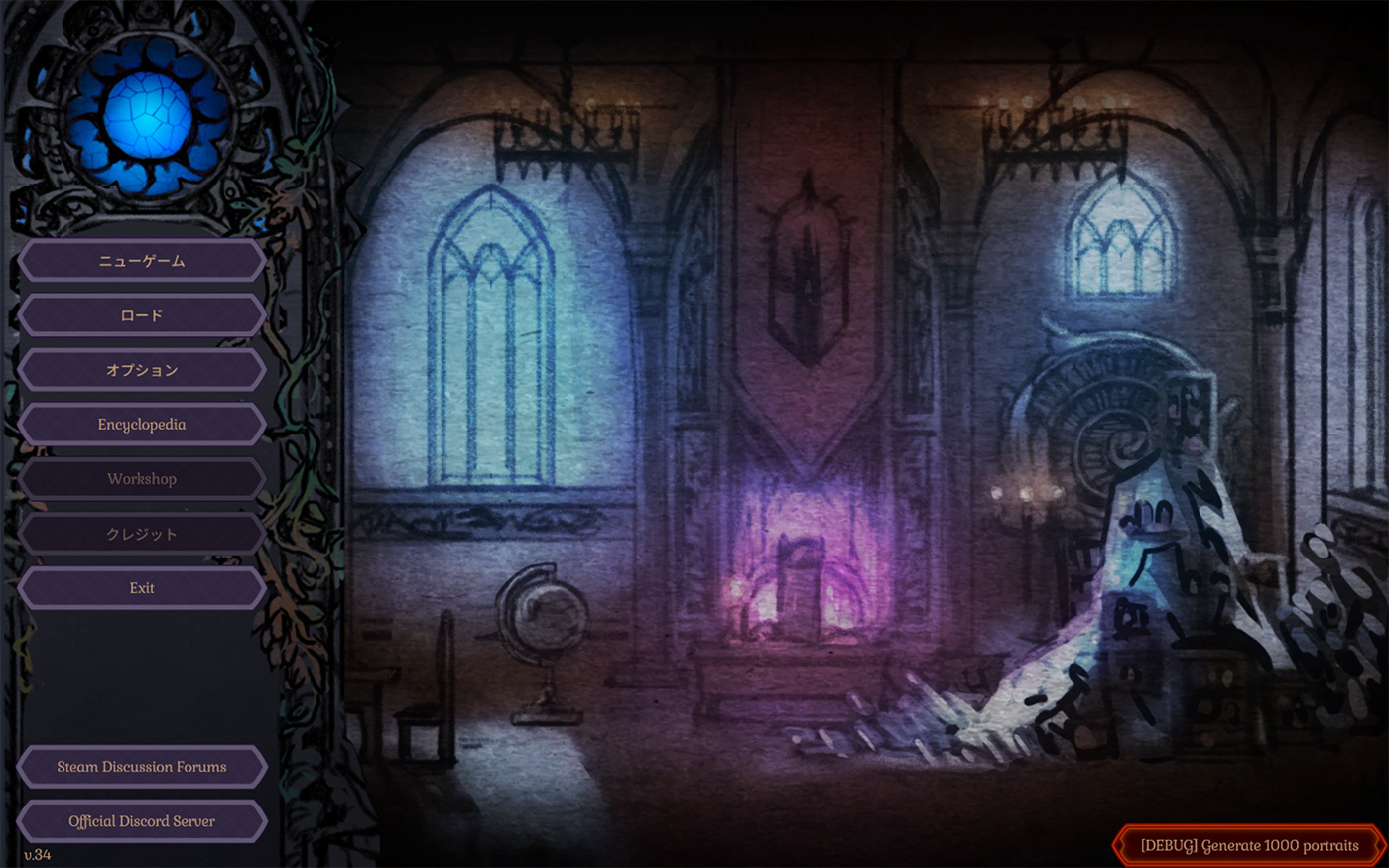

 Concepts of the Giggler.
Concepts of the Giggler. Concepts of Wood Weepers.
Concepts of Wood Weepers. Concepts of Earth Leeches.
Concepts of Earth Leeches.

